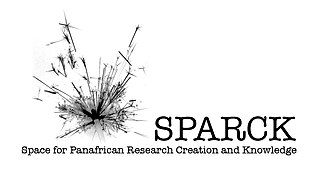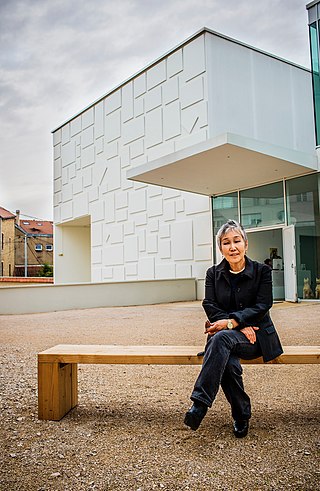History of IAN
Through the support of Asian Cultural Council Taiwan and other local and funders, a meeting of 35 Asian artist directors from 15 countries was held in July 2005 in Taiwan. The thrust of the gathering was to discuss the issues and difficulties concerning Asian artists’ mobility and cultural exchange. Asia is in need of understanding itself in both a traditional and contemporary context: a premise of IAN is that 21st century cultural identity in Asia will be understood through movements, projects, and residencies of its own culture workers. The Intra Asia Network for artist residency, mobility, and exchange now comprises members from Taiwan, Cambodia, Thailand, Japan, China, Korea, Vietnam, Indonesia, Malaysia, and even Australia and New Zealand.
A second meeting of IAN representatives was held, with the support of Asia Europe Foundation, during the annual conference of Res Artis in Berlin, convened by the ufaFabrik. That gathering involved the leaders of 40 Asian culture NGOs and reaffirmed the need for an action group to share knowledge, resources, experience and collaboration across Asian borders.
The third conference of IAN was held in South Korea in September 2006. The workshops were held in conjunction with the 2006 Gwangju Bienniale, while the second half of the gathering was held at Ssamzie Space in Seoul. The objectives focused on the common concerns of many Asian directors and cultural leaders: professional development, management of artist’s space and initiatives, and new models for funding, operating, and advocating for the role of artists' mobility and cultural exchange. This most recent gathering was co-sponsored by Artists Forum International (AFI), with support from Arts Council of Korea, City of Gwangju, the Korean Nonprofit Alternative Space Network, and the Prince Claus Fund.
Prescott College is a private college in Prescott, Arizona.
Womanifesto an international art exchange program based in Thailand. It is a biannual artist-initiated event focusing on the work of women artists from around the world. Womanifesto has gained international recognition and developed steadily since the first event in 1995. Through various activities, including art exhibitions, workshops and seminars, Womanifesto develops networks among participating artists and encourages interaction within urban and rural communities. The initiative offers a way to rethink feminist, nation-centric, and region-centric narratives of art history.

The Korea Foundation is a non-profit public diplomacy organization established in 1991 to promote a better understanding of Korea and strengthen friendships in the international community. The foundation carries out various projects for exchange between the South Korea and foreign countries to cultivate mutual understanding.
Jeunesses Musicales International (JMI) is the largest non-governmental youth music organisation in the world, created in Brussels, Belgium in 1945, with the mission to "enable young people to develop through music across all boundaries". JMI has established four priority activity fields: Young Musicians, Young Audiences, Youth Empowerment and Youth Orchestras & Ensembles.

The Asian Cultural Council (ACC) is a non-profit organization dedicated to advancing international cultural exchange between Asia and the U.S. and between the countries of Asia through the arts. Founded by John D. Rockefeller III in 1963, ACC has invested over $100 million in grants to artists and arts professionals representing 16 fields and 26 countries through over 6,000 exchanges. ACC supports $1.4 million in grants annually for individuals and organizations.

The Substation is Singapore's first independent contemporary arts centre. It was founded in 1990 by Kuo Pao Kun. The Substation is centrally located in the city's civic district and was the first building under the National Arts Council's "Arts Housing Scheme". It officially opened on 16 September 1990. The Substation is a non-profit organisation and registered Institution of Public Character in Singapore, which relies on financial and in-kind support from the general public, commercial organisations and government ministries to cover the costs of operating and developing arts & educational programmes.
University Mobility in Asia and the Pacific (UMAP) is a voluntary regional association of government, non-government and/or university representatives of the higher education sector established in 1993 to enhance cooperation and exchange of people and expertise through increased mobility of higher education students and staff. UMAP has been endorsed by Asia-Pacific Economic Cooperation and member countries are implementing UMAP projects.
Toomas Altnurme is an Estonian sculptor painter. He is known for his large-scale, abstract sculptures that often incorporate elements of nature and the environment. His work is characterized by a sense of movement and fluidity, as well as a strong connection to the natural world. Altnurme's work often incorporates natural materials such as stone and wood. He has also created sculptures that incorporate elements of light and sound, to create an immersive and interactive experience for viewers. His sculptures can be found in various locations across Estonia, such as parks, squares, and in front of buildings.

Trans Europe Halles (TEH) is an international network of community-led, grassroots cultural centers established in repurposed buildings.
Res Artis is the peak member organisation for the international arts residencies field comprising more than 700 vetted members in over 85 countries. Founded in 1993, a operates a website and the largest existing network of artist residency programs.

The Berkeley APEC Study Center (BASC) is a research center at the University of California, Berkeley. Created in 1996 in response to an initiative by U.S. President Bill Clinton, the center undertakes research, disseminates information and facilitates discussion on APEC-related issues involving political, economic and business trends in the Asia-Pacific region.
The US–China Education Trust is a non-profit organization based in Washington D.C. Founded in 1998 by Ambassador Julia Chang Bloch, the first Chinese-American U.S. Ambassador, USCET seeks to promote China–United States relations through a series of education and exchange programs. The organization sponsors a variety of fellowships, conferences, workshops and exchanges, focused primarily on strengthening Chinese academic institutions related to the fields of American Studies, Media and Journalism, American Governance, and International Relations.

Space for Pan African Research Creation and Knowledge (SPARCK) is a multi-sited, multi-disciplinary project founded in 2008 in collaboration with The Africa Centre. It is structured around a series of residencies for artists from across Africa and the African diaspora working in numerous media and styles, a wide range of exhibitions, installations, performances, screenings, Internet link-ups, publications, round-table discussions and workshops. Its initiatives are directed at a diverse body of the public and actively engaged local communities.
The Korea Human Rights Foundation (KHRF) was established in 1999 by prominent human rights experts, activists, lawyers, and academics following the commemorative events of the 50th anniversary of the Universal Declaration of Human Rights, the KHRF strives to promote solidarity for empowerment in the realm of human rights in Korea.

Seungduk Kim is a curator & exhibition organizer in the field of contemporary art. She is currently working for Le Consortium in Dijon as co-director and associate curator. Seungduk Kim was selected as Commissioner of the Korean Pavilion for the 55th Venice Biennale in 2013. She was in charge with Franck Gautherot – for Le Consortium – of the artistic direction in Asia Culture Center in 2014 to 2016, for space design and public art programs. Kim Seung-duk was made Chevalier de l’ordre des Arts et des Lettres by the Ministry of Culture of the Government of France, in July 2022.
The South Project was a program of events originating in Melbourne designed to explore potential cultural connections between countries of the South

The Trilateral Cooperation Secretariat (TCS) is an international organization established with a vision to promote Lasting Peace, Common Prosperity, and Shared Culture among China, Japan, and South Korea. Upon the agreement signed and ratified by each of the three governments, the TCS was officially inaugurated in Seoul, on 1 September 2011. On the basis of equal participation, each government shares 1/3 of the total operational budget.

Para Site is an independent, non-profit art space based in Hong Kong. It was founded in 1996 by artists Patrick Lee, Leung Chi-wo, Phoebe Man Ching-ying, Sara Wong Chi-hang, Leung Mee-ping, Tsang Tak-ping and Lisa Cheung. It produces exhibitions, public programmes, residencies, conferences and educational initiatives that aim to develop a critical understanding of local and international contemporary art.
Ghislaine Boddington is a British artist, curator, presenter and director specialising in body responsive technologies, immersive experiences and collective embodiment, pioneering it as 'hyper-enhancement of the senses' and 'hyper-embodiment' since the late 80s.
Bahc Yiso, also known as Mo Bahc, was a South Korean visual artist, cultural organizer, curator, theorist, and educator.








